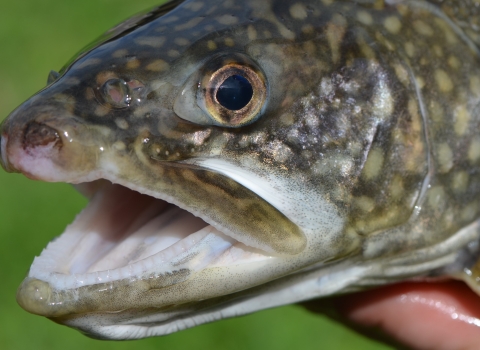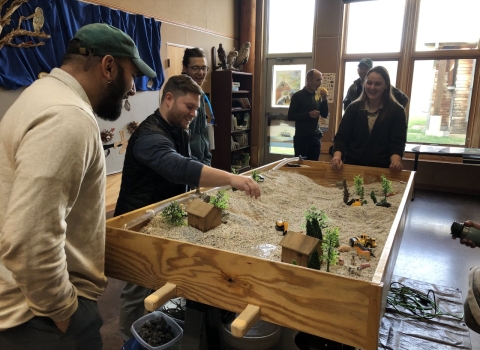Projects and Research
Our office manages five primary programs: Native Species, Aquatic Invasive Species, Aquatic Habitat Restoration, and Outreach and Education. We work closely with state and local governments including the New York State Department of Environmental Conservation, universities, and watershed groups like Buffalo Niagara Waterkeeper. We also work with other federal agencies such as the U.S. Army Corps of Engineers and the U.S. Geological Service, and we work with tribes and nations. We monitor and study native Great Lakes fish, monitor and respond to new invasive species invasive species
An invasive species is any plant or animal that has spread or been introduced into a new area where they are, or could, cause harm to the environment, economy, or human, animal, or plant health. Their unwelcome presence can destroy ecosystems and cost millions of dollars.
Learn more about invasive species , and restore habitat for fish and wildlife. In addition to congressional appropriations, the Great Lakes Restoration Initiative also provides funding and technical support to carry out these conservation and restoration programs in Lake Erie and Lake Ontario.
Lower Great Lakes FWCO staff are piloting a round goby (Neogobius melanostomus) study on a small reef (about 210 m2) in Lake Ontario. We are testing whether removal of round goby on a spawning reef can provide any localized improvement of lake trout recruitment. Round gobies are invasive to the Great Lakes, and while they are proba
bly best known as predators to invasive...
Aquatic invasive species (AIS) are non-native (exotic) organisms, which are detrimental to native ecosystems due to their explosive range expansions and competition for food and habitat. Non-native species introductions may be intentional (stocking) or unintentional (bait, boats, canals). The office coordinates the Northeast Region AIS Program, which includes three components: coordination/...
The Lower Great Lakes Fish and Wildlife Conservation Office: Ohio River substation is co-located with the Ohio River Islands National Wildlife Refuge in Williamstown, West Virginia and is also part of the Northeast Fish and Aquatic Conservation program. Our substation is relatively new, being established in 2022, and is responsible for monitoring invasive carp (silver, bighead, grass and...
Habitat degradation and loss have contributed to the decline of native species throughout the Great Lakes. The coastal waters and watersheds of the Great Lakes are comprised of a variety of wetland and riparian habitat types essential to animals and plants, including many rare, threatened and endangered species. The Aquatic Habitat Restoration Program provides technical and financial...
Native fish species, such as lake sturgeon, lake trout, and various native preyfish , inhabit the lower Great Lakes basin. The office, in cooperation with state and provincial agencies, works toward the protection and management of these native fish species. Native species activities include conducting fish community surveys; assessing fish population size, age distribution, growth and...
The Lower Great Lakes Fish and Wildlife Conservation Office maintains an advanced geospatial services program for the support of on-going fisheries and habitat restoration activities. The program is the combination of hardware, software, data, people, and techniques used to better understand the patterns and relationships of spatial, biological, and physical information. Geospatial services...
We recognize the value and need for public support and participation for the success of its programs and is committed to working with the public as a partner. Outreach provides an opportunity to highlight the successes of our office and educate the public about environmental issues in Lakes Erie and Ontario. We seek to educate, inform, and improve the public’s awareness to promote...
Across the landscape, undersized, aging and improperly placed road-stream crossings create barriers in our rivers, streams, and tidal wetlands. These structures fragment aquatic habitat and prevent or greatly reduce the ability of aquatic species to move freely to migrate, feed, and reproduce. These poorly designed structures are also more prone to clogging, causing flooding, and washing out...








